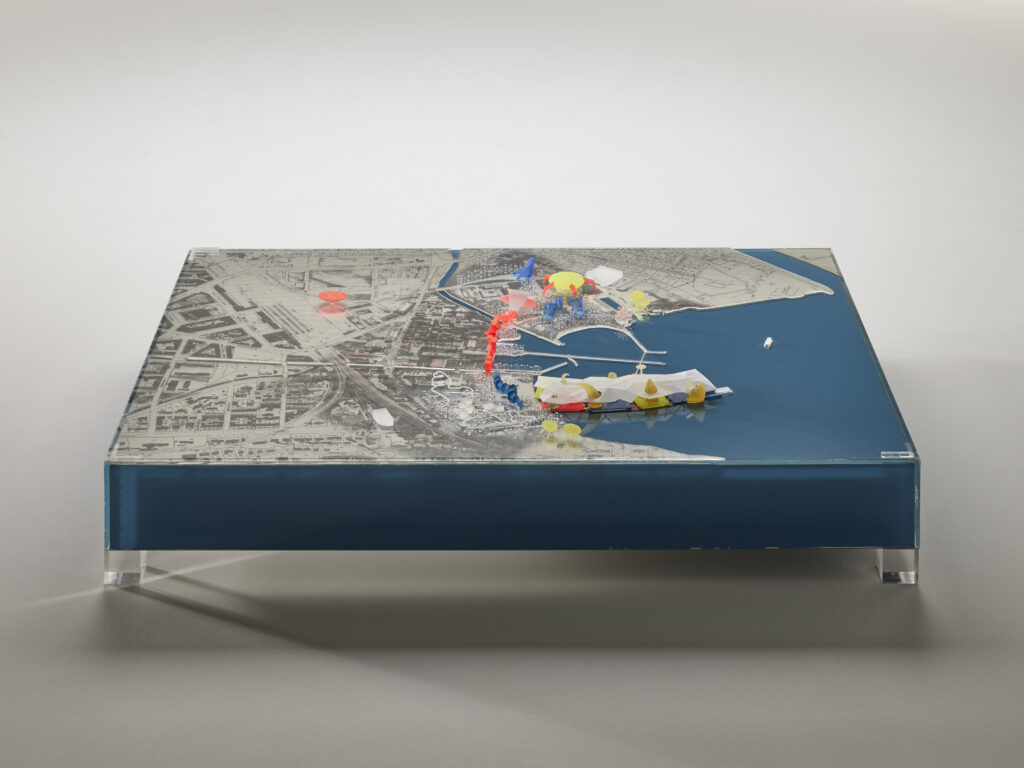Return to archive
title
TACK Talks #3: “In-tray – tracing lost voices in architectural archives” x “Election! Architecture and the Tacit Politics of Design”
guest speakers
Jennifer Mack Tim Anstey
hosted by
Angelika Schnell Academy of Fine Arts Vienna, Institute for Art and Architecture
The third round of the TACK Talks was hosted by the Institut für Kunst und Architektur (IKA) at the Akademie der Bildenden Kunst Wien (ABKW) and organised as a series of discussions between two or three academic partners of the research project who offered their understanding and vision of the tacit dimensions of architectural knowledge.
The title and theme of the research project, and consequently of the lecture series, derived from the idea of “tacit knowledge”, which was introduced by Michael Polanyi and Gilbert Ryle starting in the 1950s. They addressed the fact that there is a whole range of forms of knowledge that we learn and apply implicitly, mainly through immediate physical implementation, without being able to explain them precisely. For Polanyi, this meant that, “we know more than we can say”. (Riding a bicycle is often cited as an example of “knowing how” rather than “knowing that”.) Architecture, and especially the architectural design process, fits well into this thesis. For although many architects make great efforts to explain and (post-) rationalise their design approaches, the actual process remains unknown, even when working in a team. The physical activity of sketching, drawing, building working models, etc. is individual and collective at the same time, since in addition to the subjective choice of forms and structures, there is also recourse to the familiar, because it is easy to communicate: processes, images and jargon, which in turn also promote habitual prejudices.
It would be easy to say that this implicit knowledge need not become explicit. This attitude has in fact intensified, especially as part of modernist criticism from the 1970s onwards: architecture should be autonomous again, should be art, and should do without rational explanatory patterns. But there are some points that, conversely, should make interest in tacit knowledge grow. First of all, of course, there is the increased use of digitalisation tools in the design process, which promotes rationalisation. If the only physical activity in designing is clicking a mouse, can something like tacit knowledge emerge? And wouldn’t we need it? By whom and how is architecture then explained? This leads to the second point. In times of crisis, construction should critically engage with the public. Enigmatic explanations of beautifully drawn architectural visions are no help. Conversely, an artistic process does not have to be described prosaically. Instead, awareness of and sensitivity to other kinds of knowledge should be communicated in order to be able to promote precisely the creative power of unconventional projects. And furthermore, research into “tacit knowledge” in architecture would at the same time be a contribution to “artistic research” in architecture, a field that is yet obscure and needs to be explored in greater detail, which task the ten doctoral students involved in the research project took on in particular.
Prof. Dr. Tim Anstey, Oslo School of Architecture
“‘In-tray’ – tracing lost voices in architectural archives”
The lecture provides a thicker reading of an architectural project through searching the fringes of project documentation to reveal the results of will I would call “tacit information” – information that shapes concrete design decisions and that is shared through rather invisible, not openly stated or explicitly unstated means between a group of actors. The case is related to the architectural projects of the Warburg Institute and to the work of Gertrud Bing, assistant director and then director of the Institute, as a client agent for these.
Prof. Dr. Jennifer Mack, KTH Stockholm
“Election! Architecture and the Tacit Politics of Design”
“Now, we’ll get Sweden in order!” This phrase, used by the right-wing Moderate Party in Sweden, is the campaign tagline chosen for the upcoming Swedish elections on September 11, 2022. Many parties have emphasized safety, security, and environments free of crime in their campaign promises. Intriguingly, the built environment features heavily in several party platforms, where “vulnerable areas” (utsatta områden) – areas that the Swedish Police have defined as in need of extra assistance – will be eliminated.In this lecture, I focus on the intersection of politics, elections, and architecture to call attention to how housing, neighborhoods, and public spaces have become, implicitly, scapegoats for structural social problems beyond the scope and scale of design through a close look at political language. When Swedish politicians suggest the need for new buildings, landscapes, and renovation projects in “vulnerable” neighborhoods, they often use design as shorthand and suggest, tacitly, that doing away with problematic buildings will also do away with social problems. Analyzing rhetoric and proposals that Swedish politicians across the spectrum have included in campaign platforms for 2022, I consider how architecture has become a tacit symbol for other political agendas, as well as the human and environmental costs of such approaches.




